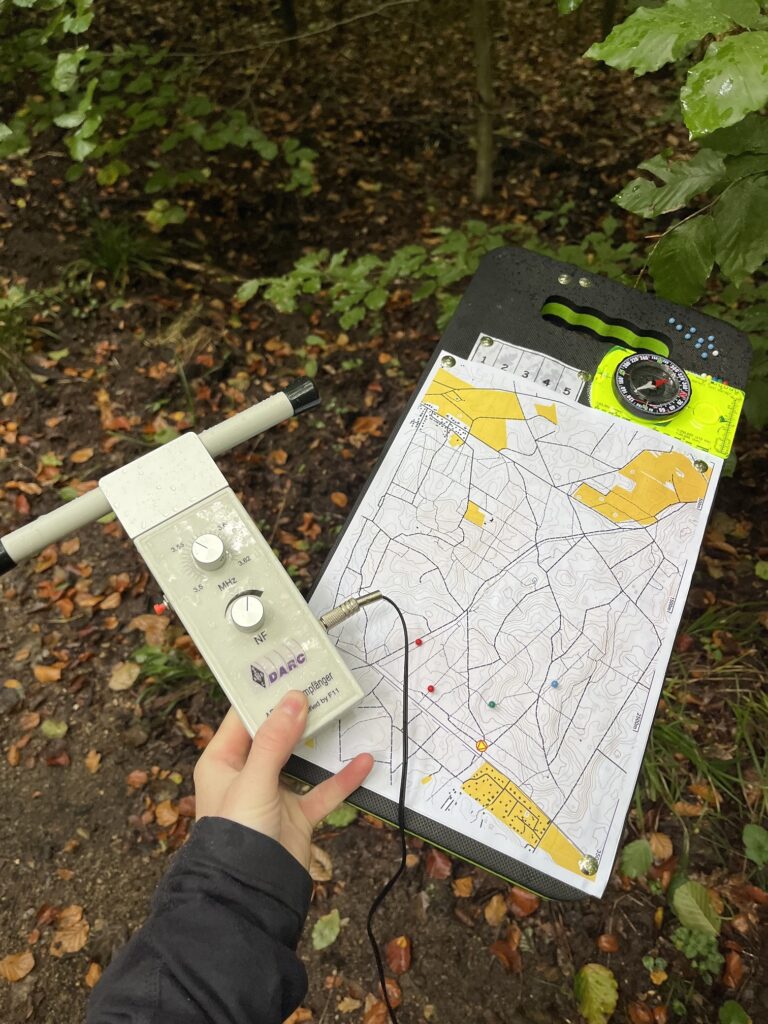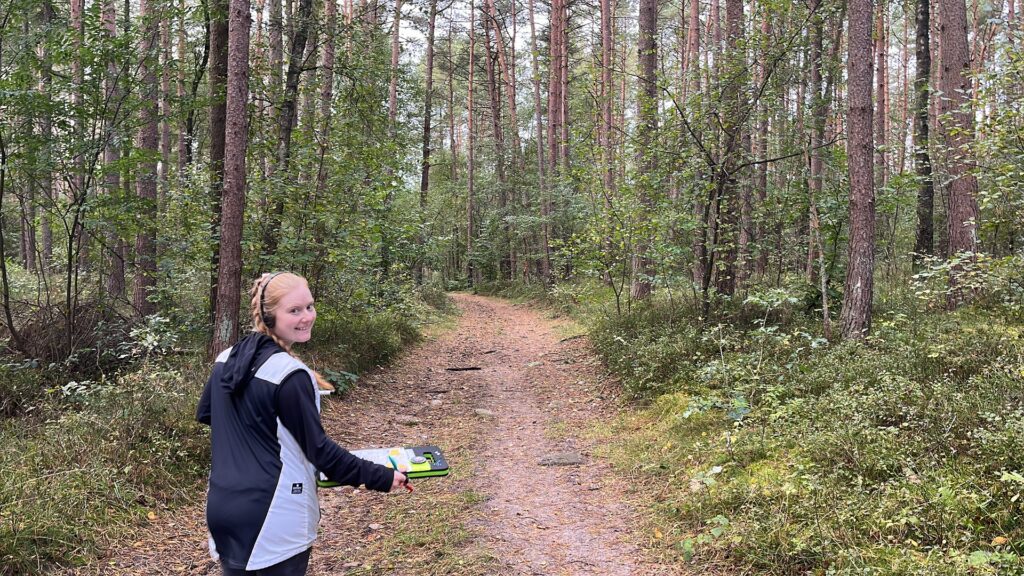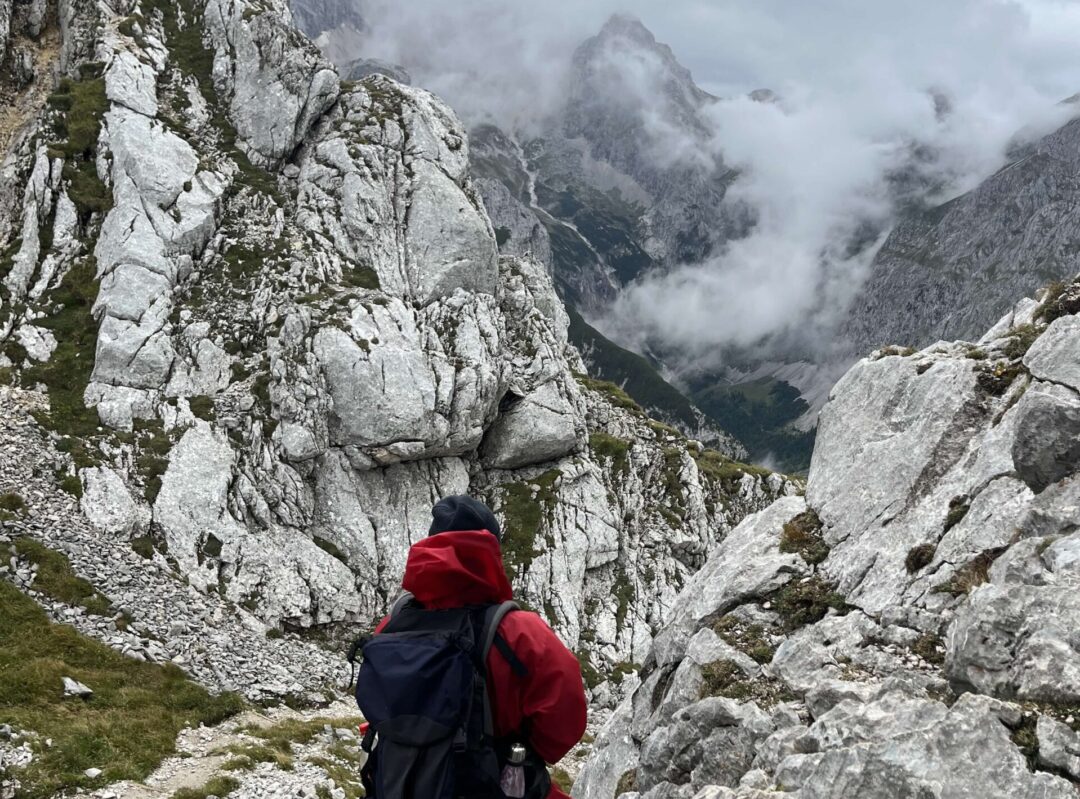ARDF stands for Amateur Radio Direction Finding, a timed event, where you need to locate a certain amount of transmitters (also known as foxes) in a given time. You basically get a map, compass, and a reciever. As I used to do orienteering, I was fairly confident in my map reading skills, but I hadn’t reckoned on how easy it was to lose your bearings, without the transmitters marked on the map! Another similarity with orienteering, is that the foxes are marked by orange and white flags, which can be suprisingly well hidden by the course setters! Times are tracked by a dibber (an electronic device), which you scan at the start, finish, and the flags.
However, instead of having locations marked on the map, like in regular orienteering, you had to use the recievers to locate the transmitters! This meant listening for the loudest signal, and running towards it. The added challenge, was that each transmitter would transmit for one minute, and then the next one would start. As we needed to find five transmitters, that meant that if you did not locate the fox within the minute, you needed to wait five minutes before it would transmit again!

After a warm welcome and a thorough introduction, we were ready to attempt the 80m course with our borrowed recievers! We were allowed to take directions before officially starting, and we could mark where we thought the transmitters were on the map. The recievers that we borrowed had ferrite rod antennas, which meant that we could not only try and locate the foxes by hearing alone, but also by rotating them vertically, we were able to “check the negative” – if we did not hear the morse from the transmitter at all, then we knew that we had found the right direction!
We were able to hear fox number four the clearest, so we set out for that one first, and were able to locate it after 10 minutes. It was so exciting, running through the woods listening to the morse get louder, that I completely forgot to keep track of our location on the map! I felt extremely disoriented, but luckily our route for the next fox took us close to the road, so I was able to reorient us again, and then made sure to pay close attention to the map after that.
Only having one minute to try and locate the fox was really tough! We decided to follow the loudest one, as that meant it was the closest one to us, but that meant that we needed to move quite quickly during the minute, and then slow down and walk, until it started transmitting again. The foxes were hidden much better than we had initially anticipated, and we needed several transmissions, in order to be confident in our direction. We managed to successfully locate three foxes, but time had flown by, and, although we were tantalisingly close to a fourth, we decided to turn to the finish, and make it back before the 120 minute cutoff time. After we got back to the finish, we got a print out of our route, and it was impressively sub-optimal!

After the 80m band, it was time to attempt 2m. We were warned that this was much more challenging, as the signal reflected off of the trees, and thanks to the rain, this would be especially difficult. This proved to exactly be the case! Immediatly after starting, we gained height, and it sounded like every transmitter was coming from everywhere. We made some guesses as to where some could be located, and headed in that general direction. After 80 minutes, we did find a fox, but entirely by accident! The recievers for 2m were larger, and after two hours of holding up the reciever we had borrowed, my arms were sore and aching – I will have to go to the gym and hold dumbells in the air to get ready for the next event!

Overall, the 80m was definitly easier, but the 2m looked cooler – people running off into the forest with large self-built yagi’s was exactly what I had imagined the event to be!

That looks a lot of fun. Was it an orginsised event and if so by who?
Would like to try it myself and run something like this for my Explorer Scouts.
73’s
James
M0LZN
Hi James,
This was indeed an organised event, it was run by amateur radio club in Winsen, in Germany. You can find their website here As I see that you have a UK callsign, it might be more useful to check the RSGB ARDF events page for events in the UK here
In order to build your own course, it may be helpful to have a short introduction into ARDF, as that will determine what you want to build. There are two different types of ARDF events. ARDF is where you get a map of the area, and need to find the foxes within a given time limit, Typically, there are five foxes, and each fox transmits for a minute, every five minutes on the same frequency. The foxes transmit in morse MO and then their number, e.g. number one would be MO1. The two frequency bands that we tried, were 80m and 2m. The 80m was much easier, as 2m reflects off of the trees, and, especially as it had been raining, it was really hard for us as beginners to identify the direction. Within the category of ARDF there is also the sub-categories ‘classic’ and ‘sprint’. The time limit for the classic ARDF is 120 minutes, and there is another type called Sprint, where the time limit is 60 minutes. The transmitters for the sprint event transmit over a much shorter time period, 12 seconds each over one minute. They are positioned closer together, and the distance you needed to cover was shorter.
The other type of ARDF is fox-oring, which is a combination of orienteering and ARDF. You get a map of the course, but this time, there are red circles drawn on, which show the area the transmitters are located. You navigate to these areas on the map using orienteering techniques, and once there you can hear the transmitters, and locate them. This time, unlike ARDF, the transmitters transmit constantly, at lower power.
I would also like to try out building my own course, and will pick up PCBs for the fox-oring transmitters from the amateur radio club in Winsen. In case you would like to have PCBs too, I can put you in contact with them. If you are not in a rush, I would also be very happy to bring some PCBs to the UK in December, and post them to you then, so you can avoid higher postage fees. In case you do not need a PCB, I do also have the schematics for the foxoring transmitters here and the information about the receivers that we used can be found here. Unfortunately both are in German, but I hope that the circuit diagrams are still readable.
In case you have more questions, feel free to reach out.